Wondermondo 🢖 World 🢖 Wonders of Africa 🢖 Wonders of Algeria
Wonders of Algeria
Territory
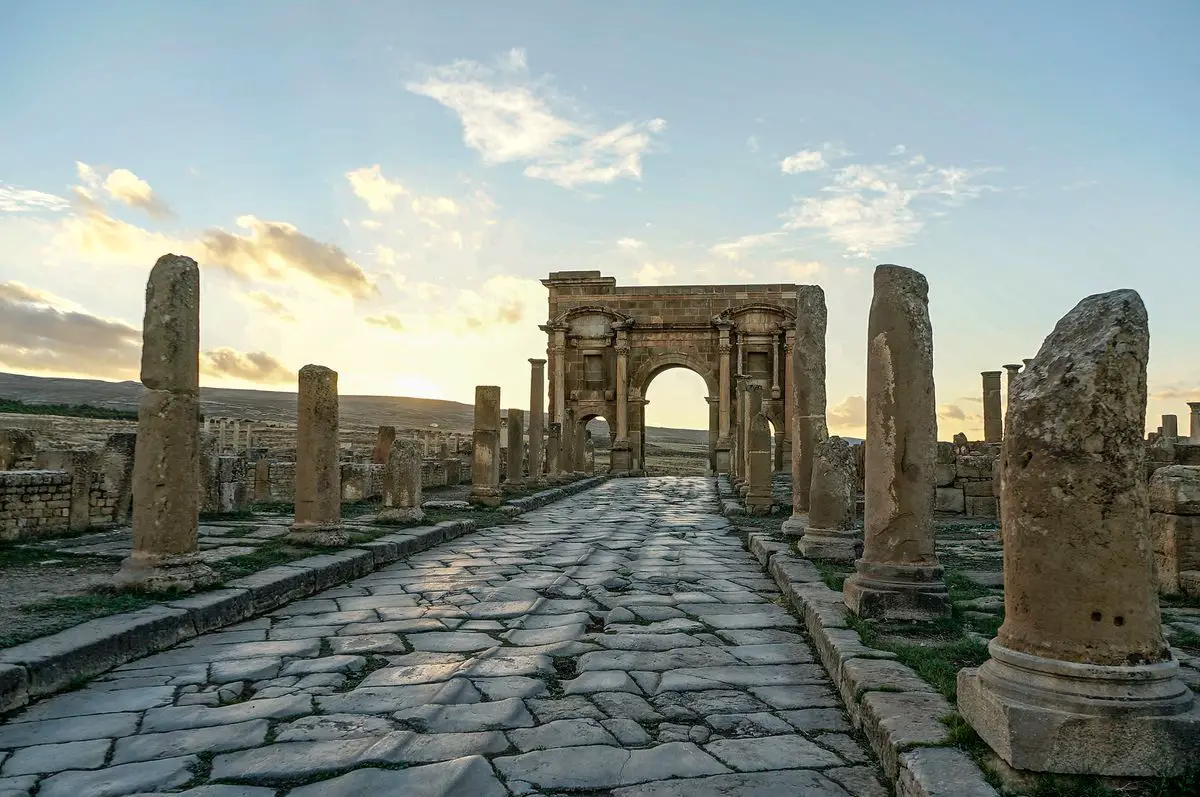
 Highlights
Highlights
Algeria is the largest country in Africa. An unstable political situation prevents the development of tourism – but rest assured that there is a lot to see in this diverse country. A huge lot of attractions still wait to be discovered – occasional travelers report a huge amount of prehistoric landmarks in remote parts of Sahara – and no scientists have seen them yet.
The most amazing wonders of Algeria are:
- Prehistoric rock art in Tassili N’Ajjer – only Aboriginal rock art in Australia and the cave art in France and Spain can compete with the quality and diversity of rock art in Tassili N’Ajjer, and, most likely, no other place in the world has such a wealth of this art. Prehistoric people have created many narratives that are mysterious to us and, it is possible, their meaning will never be explained.
- Cliff formations in Tassili N’Ajjer – these mountains in the centre of Sahara are truly breathtaking. Hundreds of fantastic cliff formations – such as the forest of rock stacks and countless natural arches – stimulate imagination and, possibly, inspired the great rock art.
- Numidian and later Berber heritage – Algeria has its own indigenous culture and heritage. Very interesting are the tombs of the ancient Numidian kings – but even more amazing are the later urban planning traditions and architecture in the old cities and towns of Algeria.
Map with the described wonders of Algeria
If you see this after your page is loaded completely, leafletJS files are missing.
 Top 25 wonders of Algeria
Top 25 wonders of Algeria
Geological wonders
Amguid crater
Tamanghasset
Very well pronounced impact crater, less than 100,000 years old. Diameter – 500 – 530 m, 65 m deep.
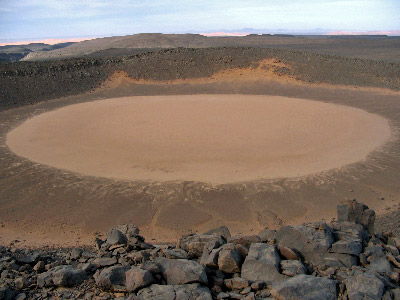
Hammam Meskoutine
Guelma
Group of hot springs that have formed giant travertine terraces. Discharge of the hottest spring (98°C) is 1650 l/min. Used for bathing since Roman times.
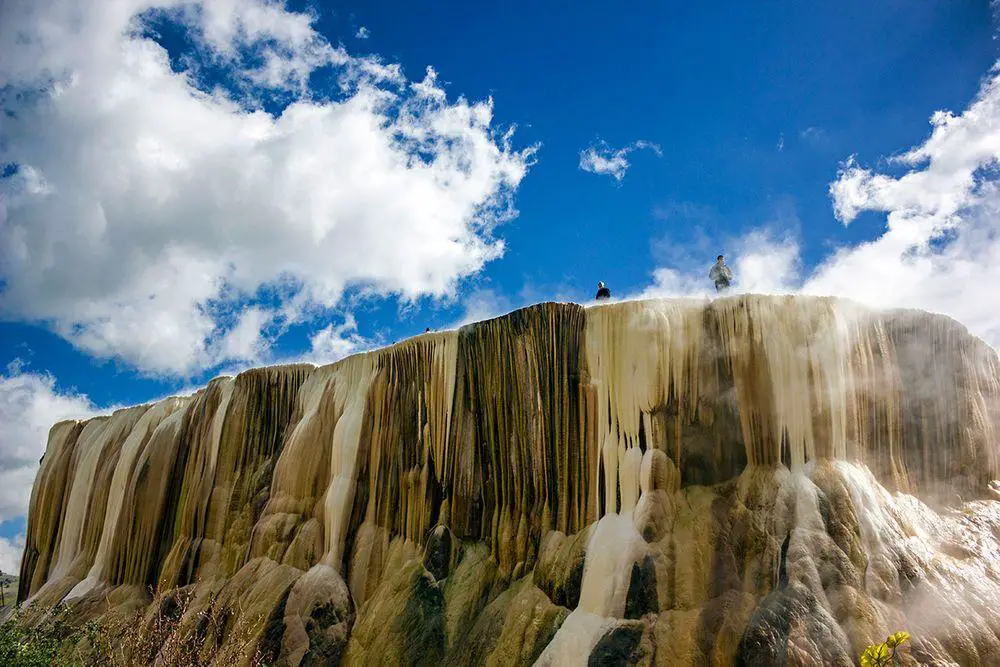
Rhummel Gorge and Constantine natural arches
Constantine
The city of Constantine is crossed by a 1.8 km long and up to 200 m deep gorge that is crossed by numerous bridges. Three natural arches cross the gorge, the largest is some 45 – 50 m tall, and approximately 30 m wide.
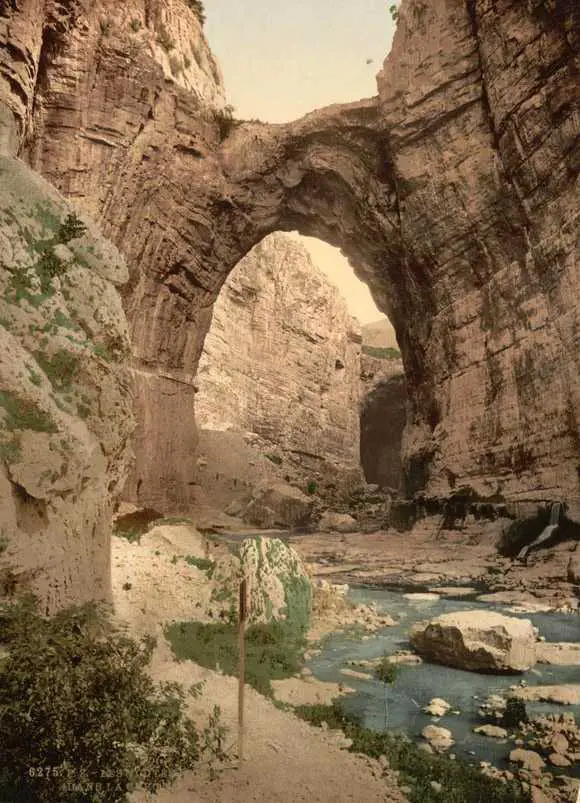
Takouba Arch
Illizi
Weird, impressive natural arch, some 20 m high and 10 m wide.
Archaeological wonders
Timgad
Batna
Extensive ruins of a once important Roman town. Founded around 100 AD as a Roman military outpost to protect Roman colonies from Berber attacks. Later became an important center of Christianity, abandoned in the 7th century. Well preserved grid planning of the street network. Important landmark – the 12 m high Trajan’s Arch.
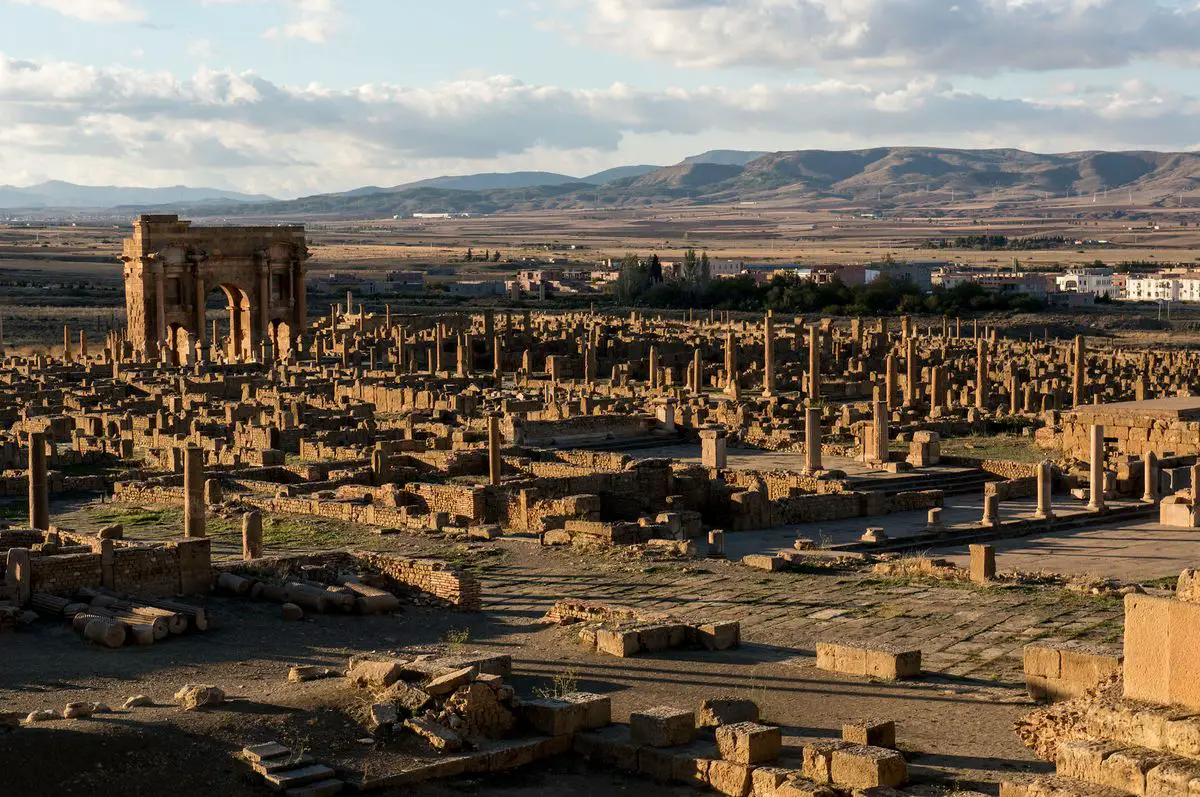
Djémila
Sétif
Berberic town in the mountains. City was constructed in the 1st century AD and abandoned in the 5th – 6th centuries.
Sefar Wadi rock art
Illizi
One of the world’s largest prehistoric art galleries with many world-renowned drawings. Most famous is the “Great God of Sefar”.
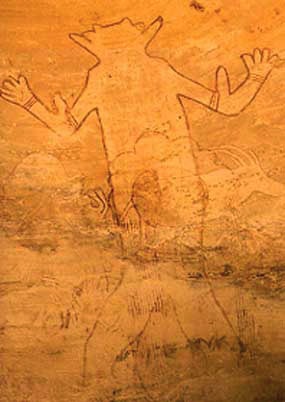
Jabbaren rock paintings (“Great Martian God”)
Illizi
Group of world-famous prehistoric paintings. One shows an enormous man-like figure that by some researchers of paranormal activities is seen as a depiction of an alien.
Royal Mauritanian mausoleum
Tipasa
Enormous stone mound, 60.9 m in diameter and 32.4 m high. The time of the construction is not known, the monument is approximately 2000 years old.
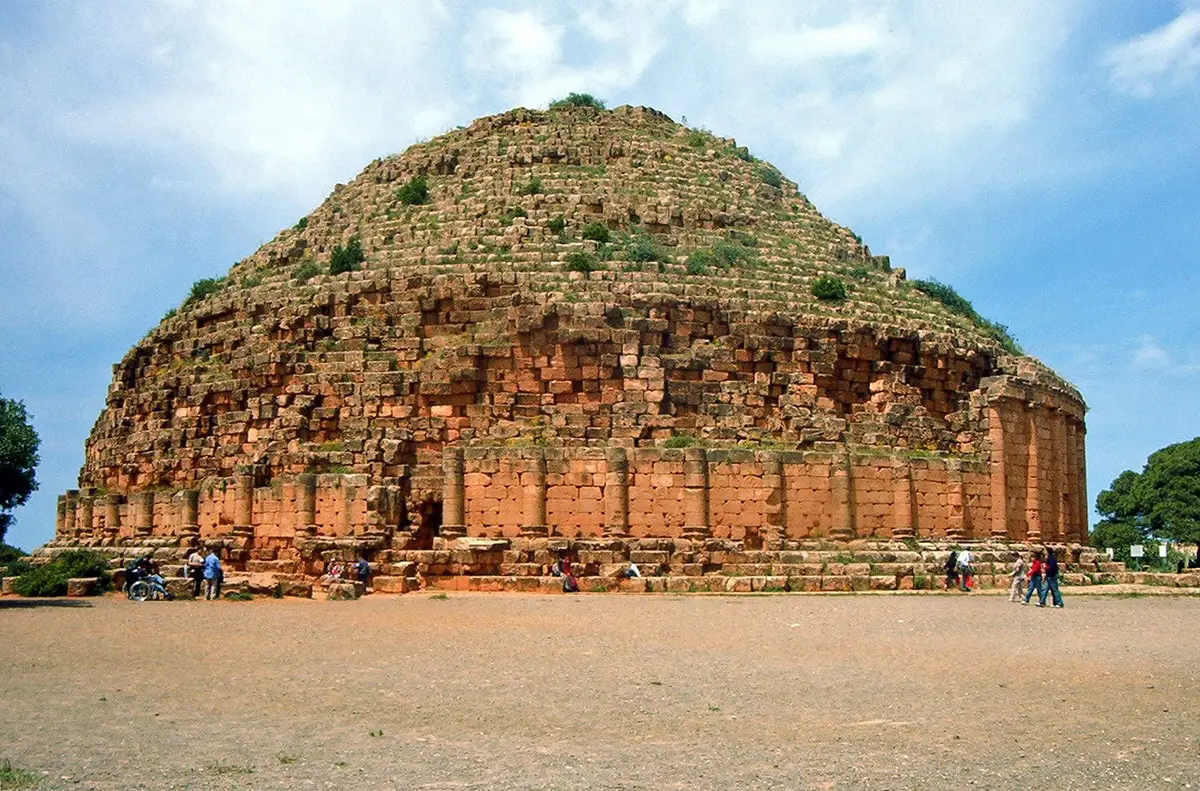
Basilica Saint Reparatus in Orleansville
Chlef
This basilica was constructed in 324 AD and is the oldest church building in Africa. Here was located also the oldest known church labyrinth, now moved to Algiers.
Jebel Lakhdar jedars and Debel Araoui jedars
Tiaret
Two groups of funerary monuments of Numidian kings. The first group has three of these round, pyramid-like structures, other – ten. The largest ones have a diameter of 46 m, and a height – of up to 18 m. The oldest is from the 5th century AD, newest – from the 7th century AD.
Hippo Regius
Annaba
Ruins of a very old town, first established by Phoenicians in the 12th century BC, later – a Roman town and an important center of early Christianity.
Medracen (Madghacen)
Batna
An unusual stone structure – round, 18.5 m high pyramidal tomb of Numidian kings. Built in the 3rd century BC.
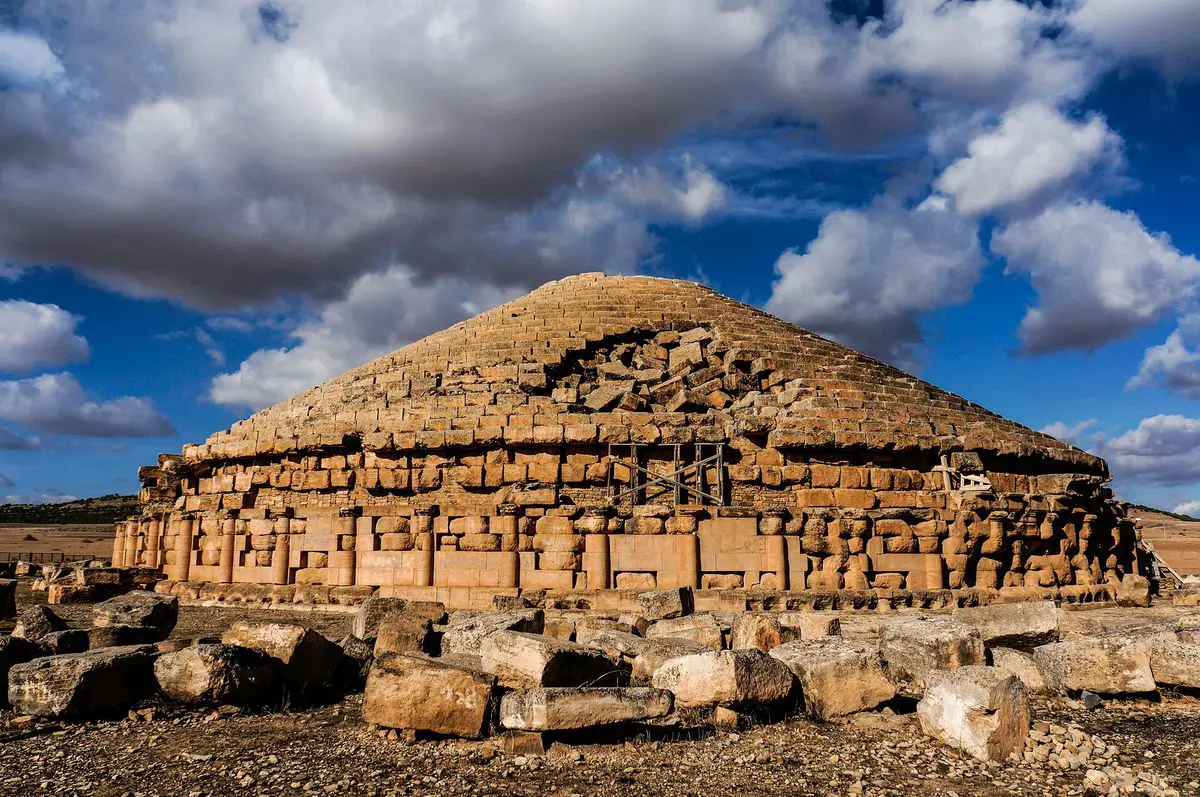
Wadi Djerat
Illizi
An early example of rock art with thousands of rock engravings along a 30 km long canyon.
Architecture wonders
M’Zab towns
Ghardaïa
Unique monument of Berber urban planning and architecture – five closely located walled towns. Each of the towns has been built in concentric rings around the mosque. The adobe structures often have unique architecture.
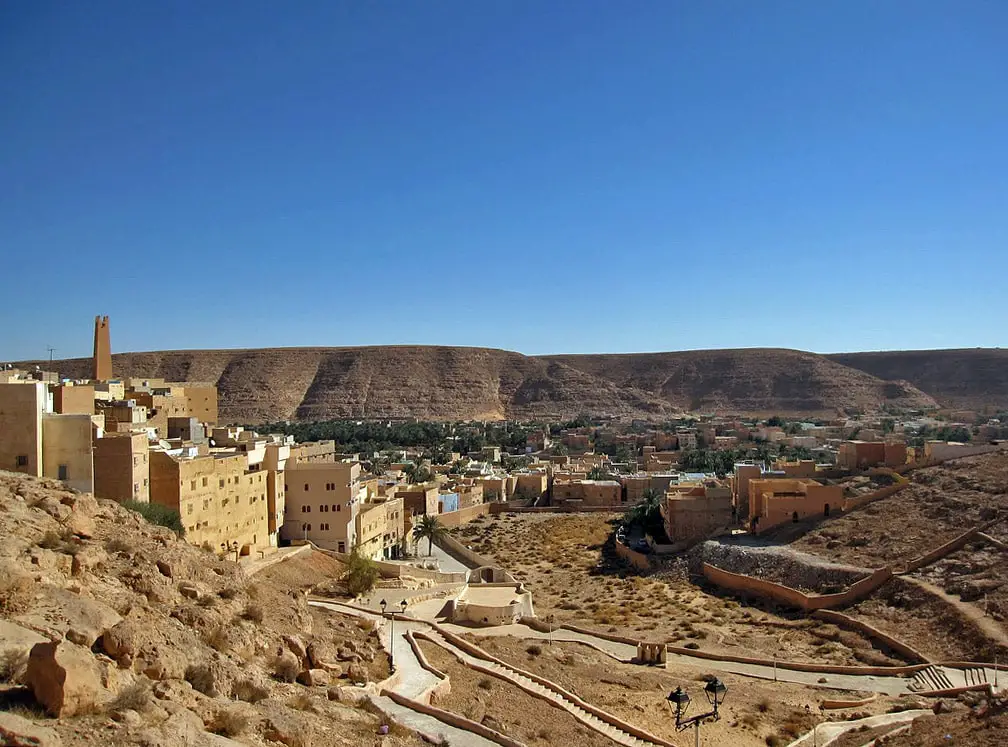
Sidi Boumediene Mosque
Tlemcen
Old mosque with ornate details, and the minaret is 23.7 m tall. Constructed in 1339.
Beni Hammad Fort
M’Sila
Ruins of the first Hammadid capital. This mountain city was enclosed in 7 km long walls and had four residential complexes. Notable is the 20 m tall minaret of a mosque. The city was built in 1007 and abandoned in 1090.
Nedroma
Oran
Historical Berber town with medieval architecture.
Djamaa el Kebir
Algiers
A large mosque, well preserved example of Almoravid architecture. Its construction started in 1097. Minaret was constructed in 1332.
Bardo National Museum
Algiers
Museum of history and art, located in an ornate Hafsid palace from the 13th century. Contains a fine collection of Roman mosaics.
Ghoufi
Batna
Historical village with many rock-cut houses (balconies), built over the deep and picturesque Ghoufi canyon. The village has been inhabited since the 4th century AD.
Timimoun
Adrar
An old desert town with characteristic planning and architecture. Most buildings are built from red clay.
Maqam Echahid (Martyr’s Memorial)
Algiers
Iconic monument, built from concrete in 1982. 92 m high.
Ketchaoua Mosque
Algiers
A large, ornate mosque, originally built in 1612. One of the most ornate buildings in Algiers.
Kasbah of Algiers
Algiers
Very well preserved old city with numerous valuable buildings and the characteristic urban network of small medieval passages and streets. Built mainly in the 17th – 18th centuries on the site of an ancient city.
 Recommended books
Recommended books
A History of Algeria
Covering a period of five hundred years, from the arrival of the Ottomans to the aftermath of the Arab uprisings, James McDougall presents an expansive new account of the modern history of Africa’s largest country. Drawing on substantial new scholarship and over a decade of research, McDougall places Algerian society at the center of the story, tracing the continuities and the resilience of Algeria’s people and their cultures through the dramatic changes and crises that have marked the country.

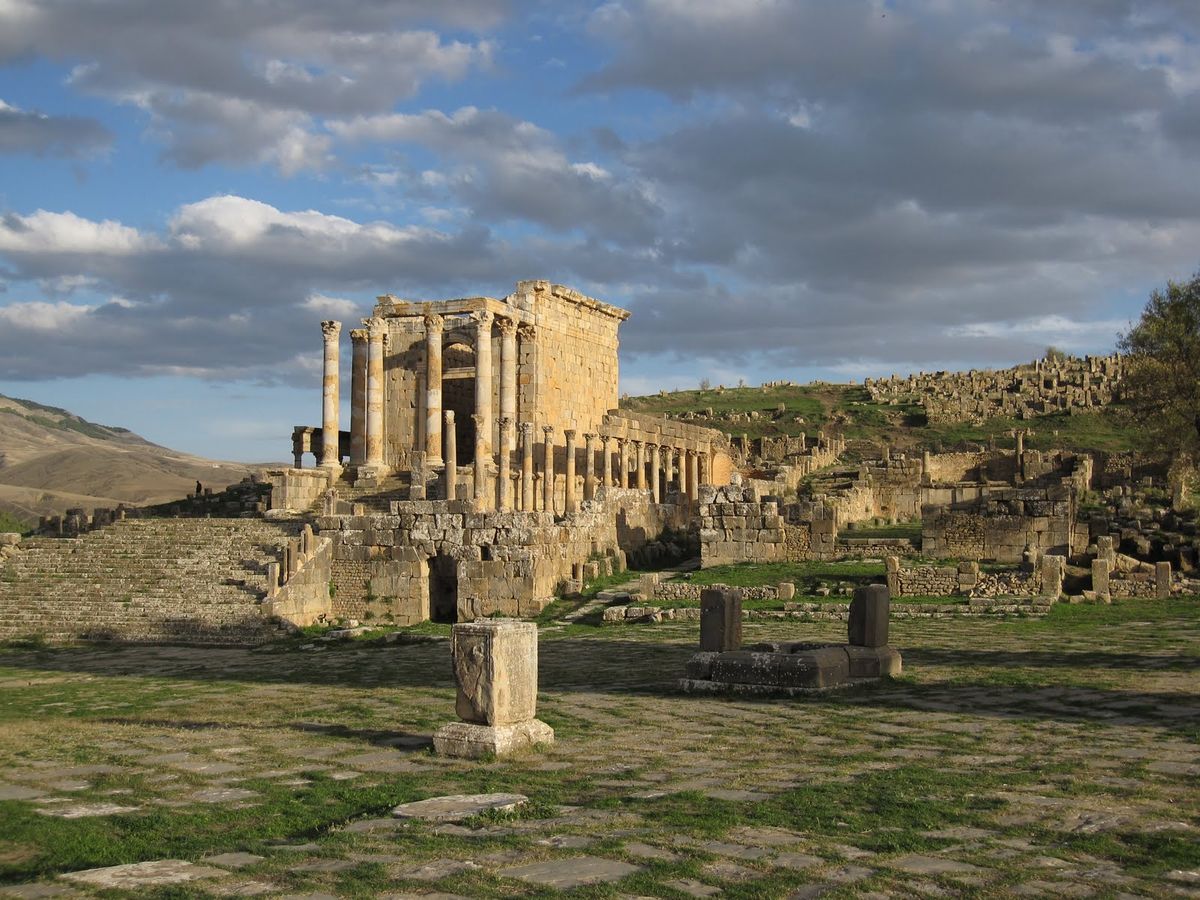


Merci pour l’article
Je suis vraiment content que tu aies aimé!
Bonjour merci pour les photos
Il n y a plus d instabilité politique en Algérie et se rendre en Algérie est très sécurisé
Et il y a un tourisme local et un tourisme des binationaux très fort , il faut se rendre sur place pour le constater Et il s’agit d”un choix du gouvernement de ne pas développer le tourisme de masse. Ils ne vivent pas sur la manne du tourisme mais sur leur rente gazière et pétrolière.
Merci pour les belles photos !